An illegal gate that has been blocking public access to the coastline at Blata tal-Melħ for the past five months remains in place as the sanctioning process that began shortly after the Planning Authority had called for its removal is now set to be delayed further after the applicant’s architect has requested a suspension.
The gate, first flagged by the Malta Ramblers’ Association in March of this year, blocks off access to an area that used to be popular with hikers and historical aficionados intent on exploring the Natura 2000 site’s rich cultural and natural heritage.
“This scenic pathway is also the easiest way to reach the popular coastal recreational spot known as Blata tal-Melħ from Baħrija,” Malta Ramblers’ Association president Ingram Bondin said, pointing out that the only other alternative pathways leading to the site are far less accessible and somewhat dangerous to travel through.
Besides being known for its natural beauty and significance as an ecological habitat, Blata tal-Melħ also used be one of Malta’s busiest salt production hubs, with a unique stairway leading directly into the sea which workers would have used to conveniently transport sacks of salt around the island using boats rather than carriages on land.
After a spokesperson for the Planning Authority had confirmed that the person who had put up the gate illegally was told to remove it towards the end of March, the same person, filing an application through a company known as Touchstone Ltd, began an attempt to sanction the gate in mid-April.
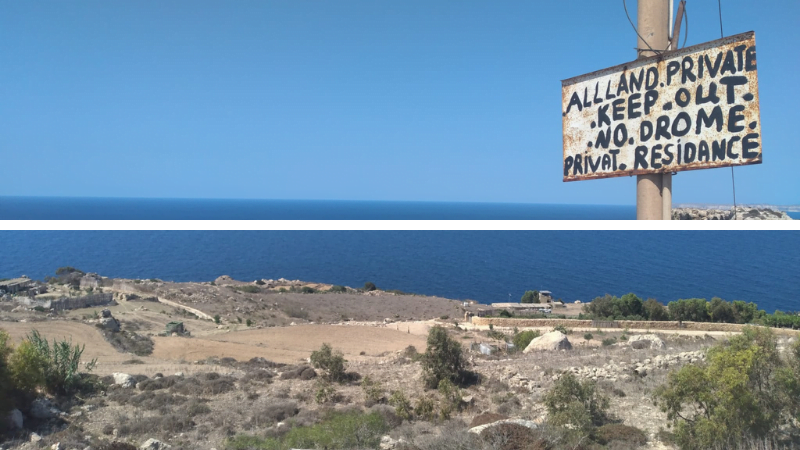
Top: a sign that claims the entire area is private.
Bottom: a scenic shot of Blata tal-Melħ.
Since then, the Planning Authority’s (PA) enforcement directorate has had its hands tied as it waits for the verdict of the planning board on whether to approve the sanctioning attempt.
Sanctioning is the process by which structures built without a permit can, subject to the PA’s judgement, be retroactively ‘legalised’, normally after a fine is paid. Meanwhile, the gate remains in place, with access remaining unavailable to the general public.
Throughout the period in which the public could object to the application’s approval, over 2,200 objections were submitted, many of which highlighted how the structure blocks off access to the entire coastline, damages the aesthetic value of the area, and “an unacceptable formalisation” of an area of High Landscape Value.
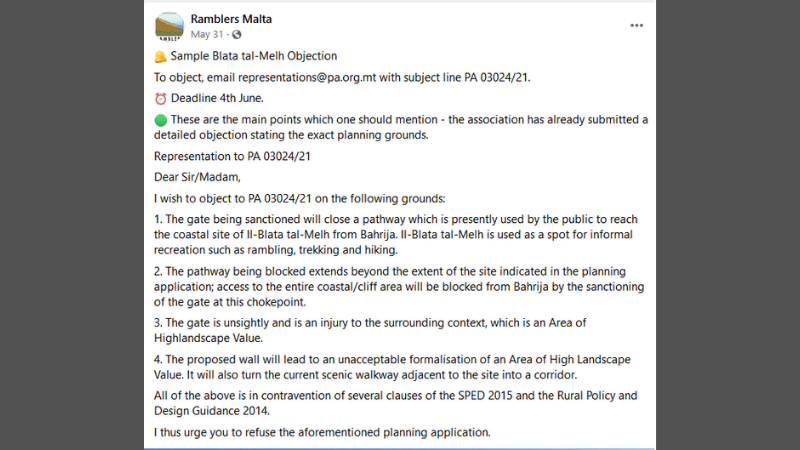
The Environment and Resources Authority (ERA), submitting its feedback in the end of May of this year, had stated that “the proposed sanctioning is not acceptable in Outside Development Zone let alone within a protected Area of Ecological Importance and Natura 2000”.
“The current access should therefore remain unhindered,” ERA’s report adds, pointing out that the area is also considered to have special conservation and protection status under the Habitats and Wild Bird Directives.
The environment watchdog also referred to the applicant’s additional request to build a rubble wall along the pathway being currently blocked by the gate, outlining that it is not acceptable since it would be “intrusive” to the natural character of the area.
ERA also pointed out clear evidence of the site being used for bird trapping, citing significant environmental concern over the reduction of habitat space and disturbances to species found in the area.
“Despite the site falling within a no trapping zone (S.L. 504/71), land clearance has also taken place for bird trapping. In fact, the prevailing bird trapping activity evident on site and its surrounding environs, and the site not being agricultural in nature, attests to the use of the identified structures as being recreational,” the report reads.
In its conclusion, the authority confidently concludes that all unauthorised structures should be removed and that interventions need to occur on site in order to reinstate the disturbed areas to their natural state.

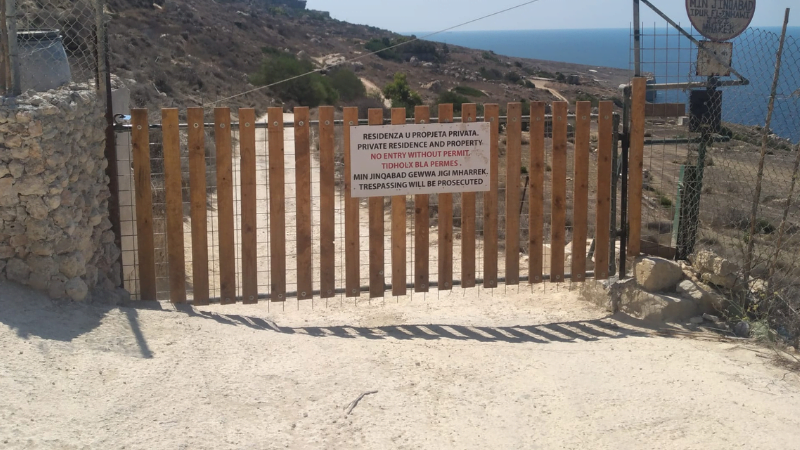

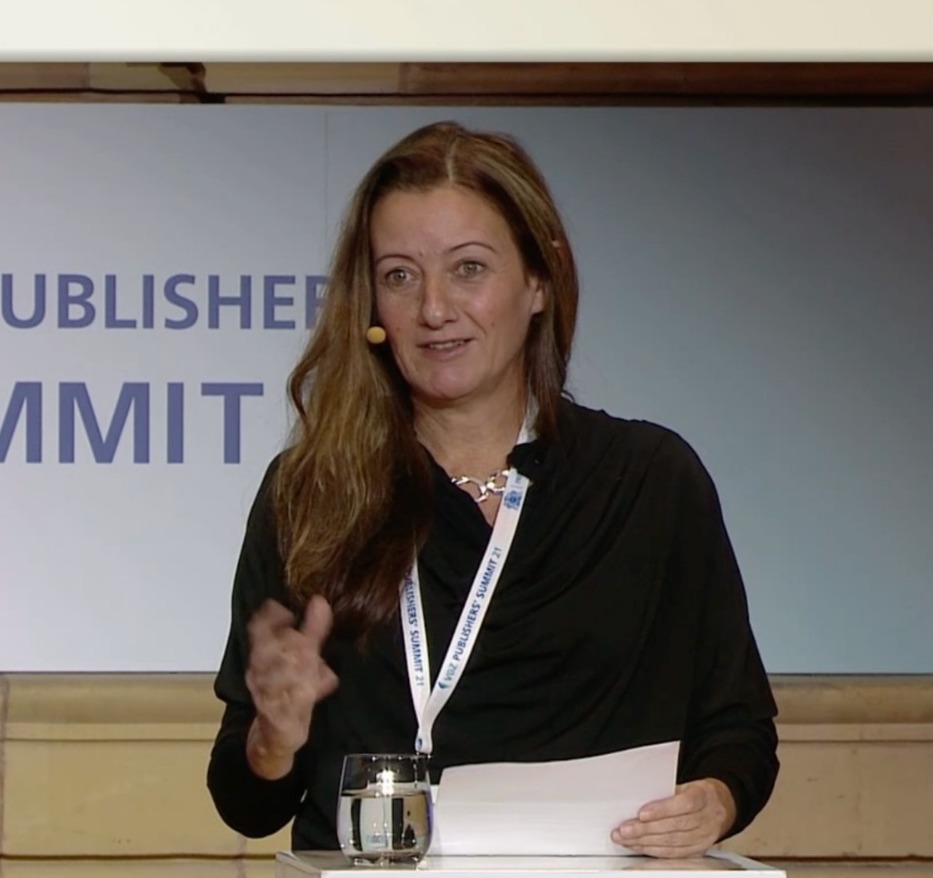

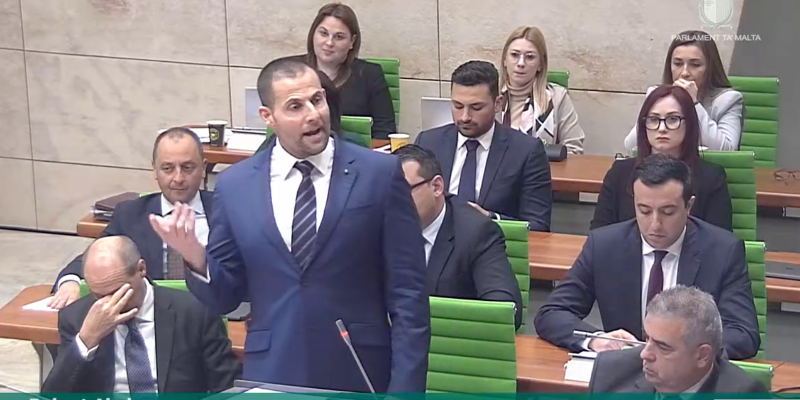









Who owns the land?
Malta is falling in a state of anarchy, everywhere you look lots of poeple are doing what they want to the detriment of everybody else, even in traffic, laws of the jungle, money rules !!